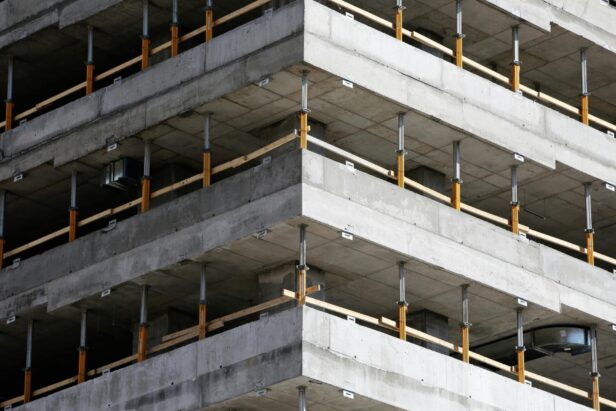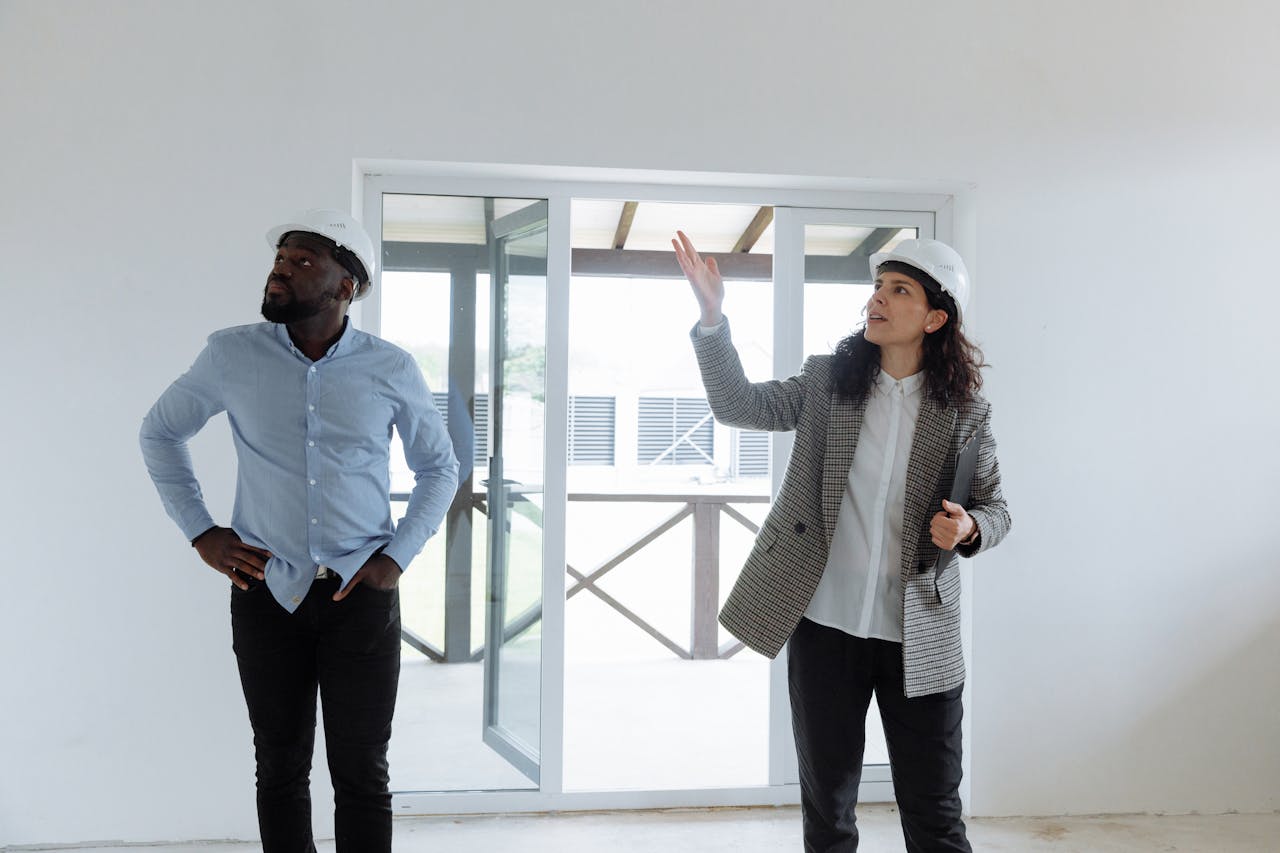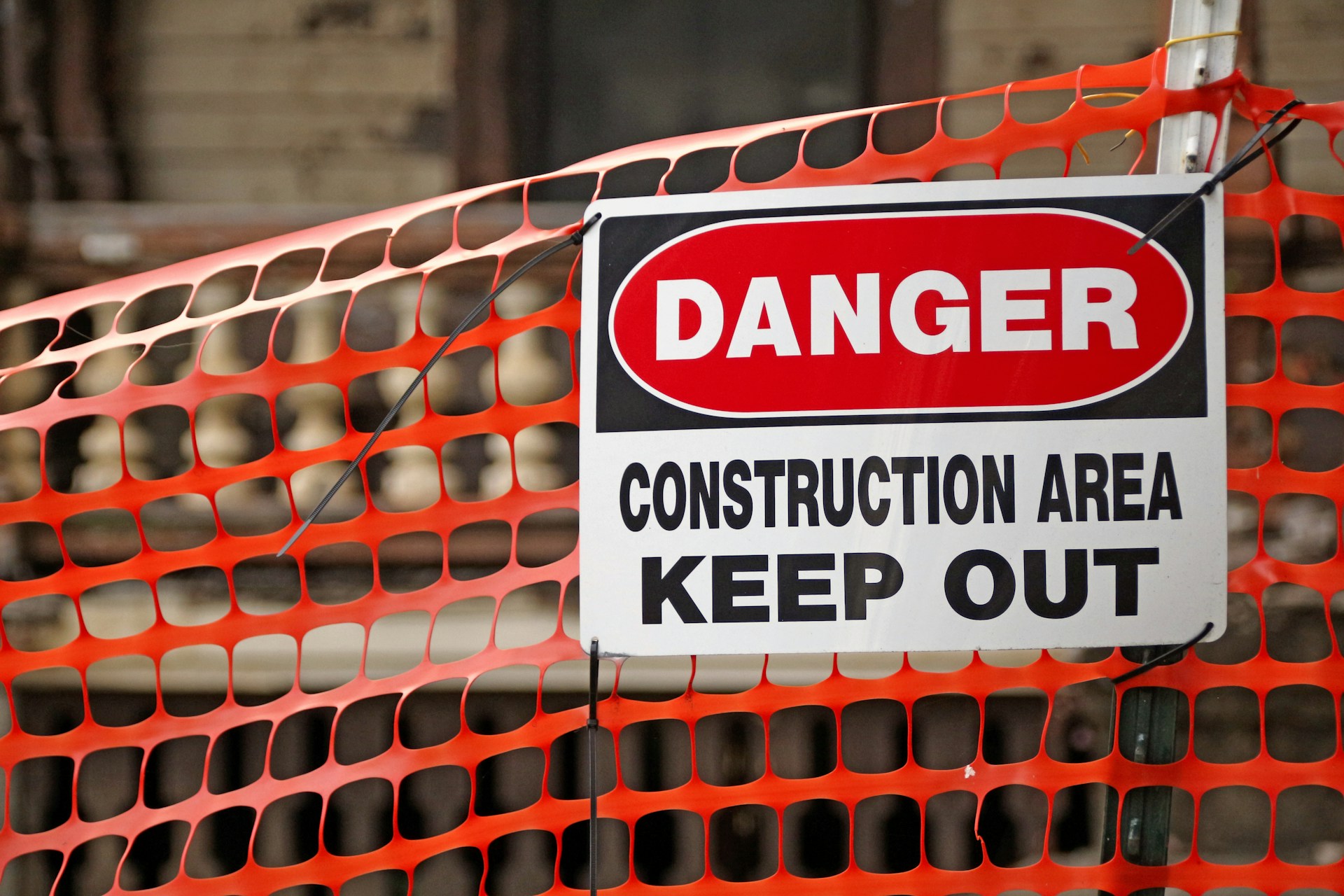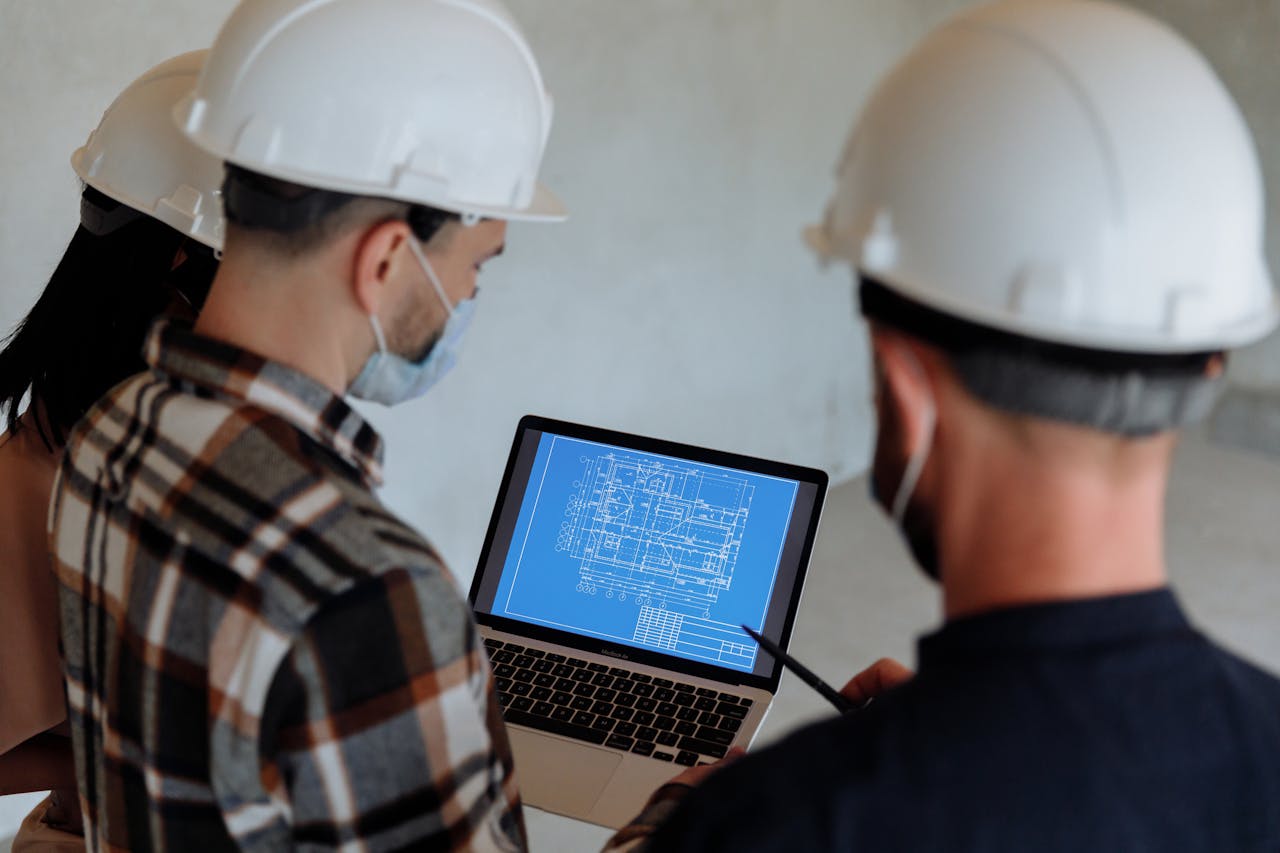A white box commercial build-out refers to a partially finished commercial space delivered to landlords or tenants. As general contractors, we create these spaces as a blank canvas, ready for customization. The term ‘white box’ comes from the typical appearance—clean white walls and ceilings that provide a neutral backdrop for future tenants.
When we construct a white box space, we focus on installing the essential elements while leaving room for personalization. This includes basic electrical wiring, plumbing rough-ins, and HVAC systems. We also ensure the space meets building codes, particularly for fire safety and accessibility. Restrooms are usually included, built to ADA standards. The floors are typically concrete, ready for the tenant’s chosen flooring material.
What sets a white box apart is what it lacks—there are no interior walls dividing the space, no customized lighting fixtures, and no specialized systems for specific business needs. This approach allows maximum flexibility for the eventual occupant. Whether it is a retail store, office, or restaurant, the white box serves as a foundation that can be efficiently transformed to suit any commercial purpose.
What Does a White Box Build-Out Include and Exclude?
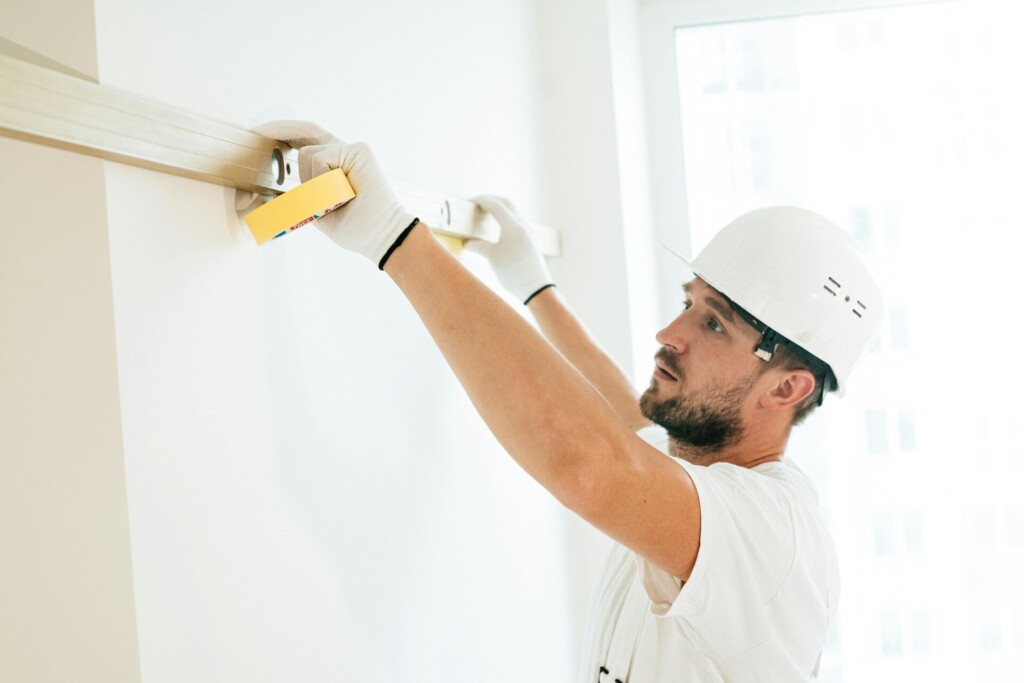
When undertaking a white box build-out for a commercial space, standard elements are included to create a functional blank canvas for tenants. At the same time, certain finishes and customizations are intentionally left out. Here’s a breakdown of what’s typically included and excluded in a white box project:
What’s Included
The core components of a white box build-out include:
- Exterior shell with a complete, finished structural system
- Insulated drywall tenant separation walls, ready for paint
- Concrete flooring
- ADA-compliant restrooms and drinking fountains
- Basic electrical systems, including:
- Emergency lighting
- Standard outlets (typically 110v)
- Electrical for restroom exhaust fans
- Plumbing fixtures for code-required restrooms
- HVAC systems with main trunk lines and basic distribution
- Fire suppression systems meeting local codes
What’s Excluded
To allow for tenant customization, we generally do not include:
- Interior wall finishing beyond restrooms (e.g., paint, wallpaper)
- Upgraded electrical fixtures or specialized power needs
- Additional plumbing beyond code-required restrooms
- Security systems
- Data, phone, or cable wiring
- Modifications to the basic HVAC layout
- Specialized flooring materials (beyond concrete slab)
- Custom lighting or ceiling treatments
By providing these core elements and leaving room for customization, we create a flexible space that meets building codes and ADA requirements. This approach allows tenants to tailor the space to their unique business needs without starting from scratch.
| White Box Includes | White Box Does Not Include |
| Exterior Shell (Exterior Walls, Finished Roof, Rear Wall) | Interior Walls Finishing (Paint or Wallpaper) |
| Interior Finish (Sheetrock Walls, Separation Walls, Windows and Doors, Concrete Flooring) | Additional Plumbing Fixtures |
| ADA-Compliant Restrooms and Drinking Fountain | Upgraded Electrical Fixtures |
| Standard Electrical Wiring | Telephone, Cable, and Data Wiring |
| Plumbing Fixtures for Code-Required Restrooms | Security Systems |
| HVAC Systems with Main Trunk Lines and Basic Distribution | Specialized HVAC System Modifications |
| Fire Suppression Systems | Custom Lighting or Ceiling Treatments |
When coordinating white box projects, we ensure all included systems and components comply with local building codes and regulations. This provides tenants with a solid foundation to build upon, streamlining their move-in process and reducing overall construction timelines.
How Does a White Box Differ from Other Commercial Space Types?
White box spaces occupy a middle ground between raw shells and fully finished commercial spaces. Unlike grey box or cold shell spaces, white boxes offer more complete basic systems and finishes. Let’s explore how white boxes compare to other common commercial space types:
Grey Box / Cold Shell
Grey box spaces, also known as cold shells, are the most unfinished type of commercial space. They typically feature:
- Unfinished floors
- Bare stud walls
- No plumbing or electrical work
- An HVAC unit may be present, but often without controls or ductwork
- Sprinkler system (if required by code) not dropped to ceiling height
Grey boxes require extensive work to become functional spaces, reflected in their higher finishing costs.
Warm Grey Box
A step up from cold shells, warm grey boxes have some essential systems in place:
- Basic HVAC, electrical, and plumbing installed
- No permanent lighting fixtures
- Still requires significant tenant improvements
White Box / Vanilla Shell
White box spaces offer a more complete starting point for tenants:
- Finished or unfinished walls, ceilings, and flooring
- Basic HVAC systems with ductwork and controls
- Standard electrical wiring and limited lighting
- Plumbing and ADA-compliant restrooms
- Fire protection systems
This level of finish allows tenants to more easily visualize and customize the space to their needs.
Fully Finished Space
At the other end of the spectrum, fully finished spaces are move-in ready with complete interior finishes, fixtures, and systems tailored to a specific use.
Cost Comparison
The level of finish significantly impacts build-out costs:
- White box finishes: Typically $5-$20 per square foot
- Grey shell finishes: Can range from $30-$100+ per square foot
These cost differences reflect the amount of work required to make the space functional and tailored to a tenant’s needs.
By understanding where white box spaces fit among other commercial space types, tenants and landlords can better assess their options and make informed decisions about leasing and build-out strategies. White boxes offer a balanced starting point, providing essential systems while still allowing for customization without the extensive costs associated with grey shell spaces.
Disclaimer: Pricing figures are based on publicly available market data and are intended for general estimation purposes as of August 2025. They do not represent a formal quote from EB3 Construction. Actual costs will vary by project scope, location, labor rates, and material prices.
What Are the Benefits of White Box Construction?
White box construction offers substantial advantages for both landlords and tenants in commercial real estate. We coordinate these projects to enhance value on both sides of the lease agreement.
Benefits for Tenants
For tenants, white box spaces provide unparalleled flexibility for customization. With basic systems already installed, businesses can focus on creating layouts and designs that perfectly align with their brand identity and operational needs. This blank canvas approach allows for efficient space planning without the constraints of pre-existing finishes.
The cost-effective nature of white box construction is a major draw for tenants. By leveraging the pre-installed core elements, companies can reduce their build-out costs by 20-30% compared to starting from an unfinished shell. This cost savings enables tenants to allocate more of their budget toward specialized equipment or high-end finishes that directly impact their business.
Crucially, white box spaces enable significantly faster move-in times. With essential systems like HVAC, electrical, and plumbing already in place, the tenant improvement process is streamlined. This acceleration is vital for businesses looking to open quickly or with time-sensitive relocation needs.
Benefits for Landlords
From the landlord’s perspective, white box construction enhances the marketability of commercial spaces. The partially finished state allows prospective tenants to more easily visualize their potential layout and design concepts. This improved visualization often leads to quicker leasing decisions and reduced vacancy periods.
White box spaces also attract a broader range of commercial tenants. The flexibility appeals to various industries and business types, from office users to retail concepts. This broad appeal can help landlords diversify their tenant mix and reduce dependency on any single market sector.
Importantly, white box spaces often command longer lease terms and higher rates compared to cold shell offerings. Tenants recognize the value of the pre-installed elements and are often willing to commit to extended agreements. The premium finish level can justify increased rental rates, improving the overall return on investment for property owners.
Mutual Benefits
Both parties benefit from the efficiency gains of white box construction. The streamlined build-out process reduces the likelihood of delays and complications, fostering a smoother landlord-tenant relationship from the outset. This collaborative approach often leads to more successful long-term tenancies.
While white box construction does require upfront investment from landlords, the benefits in terms of faster leasing, higher tenant satisfaction, and potential for premium rates make it a compelling strategy in today’s competitive commercial real estate market.
What Is the White Box Build-Out Process?
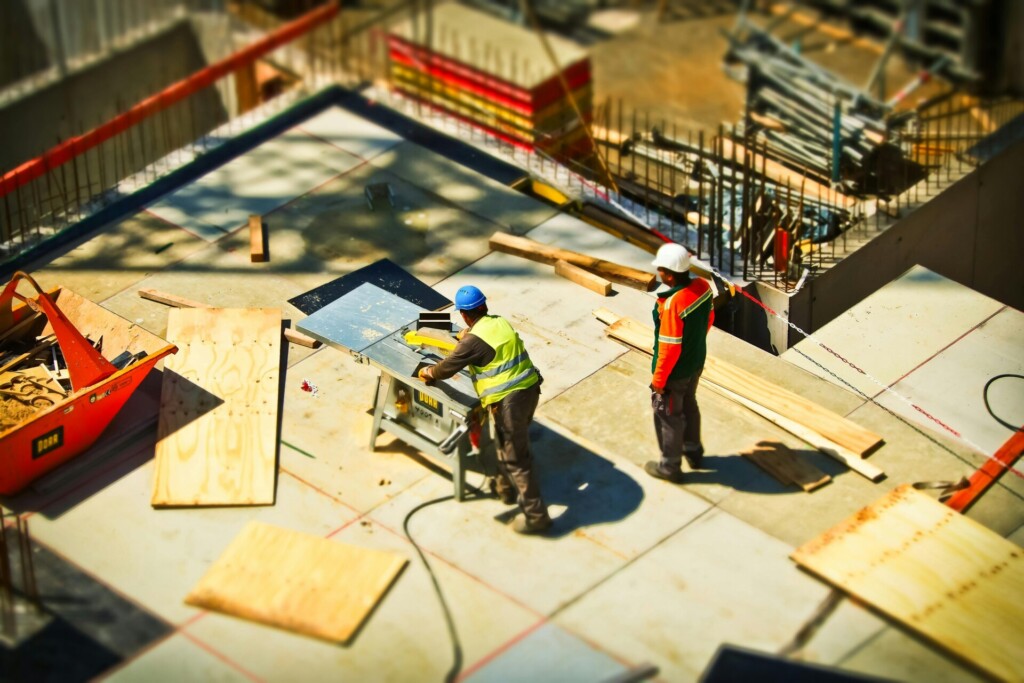
The white box build-out process transforms a raw commercial space into a basic, functional environment, ready for tenant customization. This process is carefully coordinated to meet building codes, control costs, and provide a flexible foundation for various business needs.
The typical white box build-out process includes:
Securing Permits
We begin by obtaining all necessary permits, including:
- Demolition permits (if removing existing structures)
- Building permits for major systems like HVAC, electrical, and plumbing
- Permits for drywall installation, lighting systems, and other finish work
The timeframe for the permitting process can vary significantly by location, ranging from 2-4 weeks in some areas to over 16 weeks in cities like New York or Chicago. We factor this into our project timelines to avoid delays.
Basic Construction
Once permits are secured, we proceed with installing the core elements of the white box:
- Concrete flooring ($3-5 per square foot)
- HVAC systems and ductwork ($5-10 per square foot)
- Electrical systems, outlets, and basic lighting ($3-5 per square foot)
- Plumbing and ADA-compliant restrooms ($5,000-10,000 each)
- Dropped ceilings with tiles ($3-5 per square foot)
- Drywall installation ($5-10 per linear foot)
We ensure all work meets local building codes and creates a clean, functional space ready for customization.
Tenant Improvement Allowances
To offset build-out costs, many landlords offer Tenant Improvement Allowances (TIAs). These allowances are typically:
- Calculated on a per-square-foot basis
- Negotiated during lease discussions
- Used to cover basic construction costs, excluding furniture and equipment
The TIA amount often depends on factors like lease length, tenant creditworthiness, and overall market conditions. We can help negotiate favorable terms to maximize the allowance and minimize out-of-pocket expenses.
Timeline Considerations
The white box build-out process generally takes 8-12 weeks, depending on the space size and complexity. However, extended lead times for materials and labor shortages may impact schedules. We build contingencies into our timelines and communicate proactively about any potential delays.
By carefully managing each stage of the white box build-out, we create a solid foundation for tenants to efficiently customize their new commercial space. Our goal is to deliver a cost-effective, code-compliant blank canvas that allows businesses to bring their unique vision to life.
Conclusion: Is White Box Construction Right for Your Commercial Space?
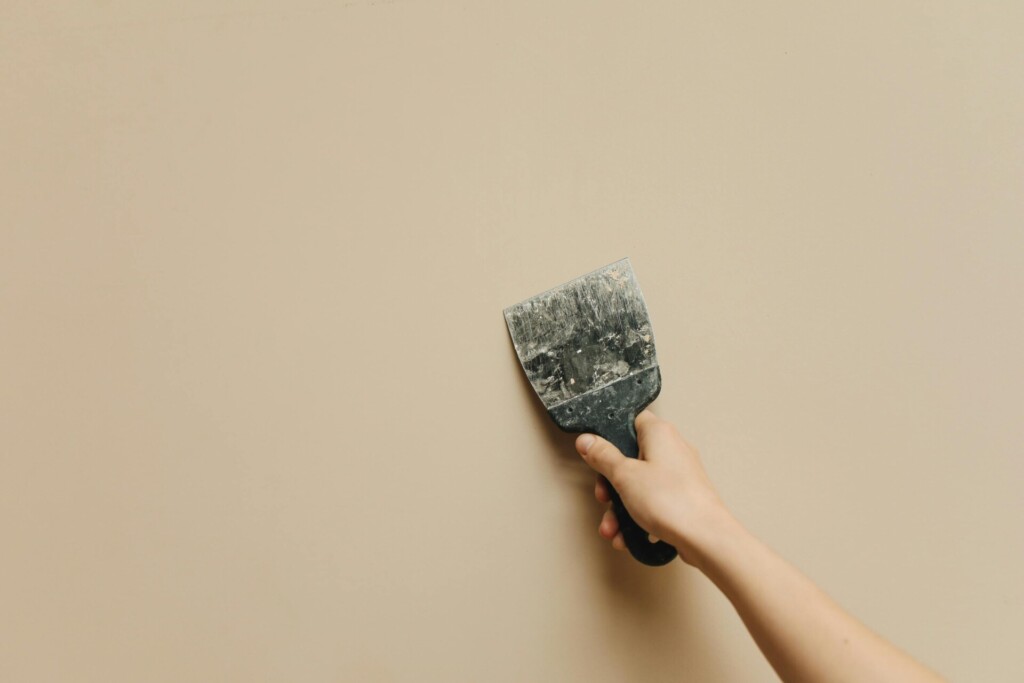
White box construction represents a practical middle ground in commercial real estate, offering a partially finished space that balances landlord preparation with tenant customization. For landlords, it creates more marketable properties that can attract tenants more quickly and secure better lease terms. For tenants, white box spaces offer the flexibility to customize according to specific business needs while reducing build-out costs and speeding up move-in timelines.
When evaluating whether white box construction is suitable for your needs, consider factors like your budget, desired timeline, and customization requirements. Landlords should weigh the upfront costs against potential benefits such as quicker leasing and higher rates. Tenants should assess how a white box aligns with their vision and whether the reduced build-out scope justifies any premium.
Ultimately, the success of white box projects relies on clear communication and carefully negotiated agreements between landlords and tenants. When expectations are aligned regarding delivery condition, improvement allowances, and responsibilities, white box construction can offer a win-win solution that efficiently occupies spaces while meeting the needs of both parties.
While not suitable for every situation, white box construction remains a valuable strategy in the commercial real estate market. By balancing a blank slate and a fully built-out space, it provides a flexible foundation for bringing commercial visions to life.
Contact EB3 Construction to discuss if white box construction is the right approach for your next commercial project.

